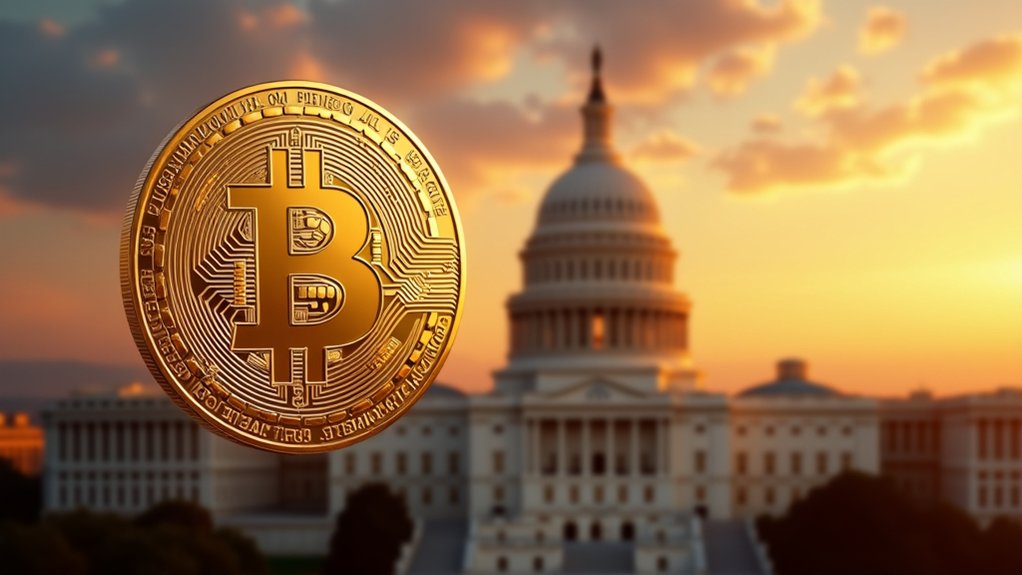While Washington has historically approached cryptocurrency regulation with all the urgency of a glacier maneuvering bureaucratic red tape, the legislative landscape appears poised for unprecedented acceleration as multiple crypto-focused bills prepare for House floor consideration between July 14-18, 2025.
The Clarity Act and GENIUS Act represent more than legislative housekeeping—they constitute a fundamental shift toward regulatory certainty that could release institutional capital currently sidelined by compliance anxiety. The GENIUS Act, having already secured Senate passage with a commanding 68-30 vote, establishes thorough stablecoin regulations that effectively create the infrastructure rails upon which Bitcoin’s mainstream adoption depends.
Regulatory clarity transforms from legislative housekeeping into institutional capital release mechanism, converting compliance anxiety into mainstream Bitcoin adoption infrastructure.
Consider the market mechanics: regulatory clarity functions as a risk-reduction multiplier for institutional investors who’ve been conducting elaborate due diligence dances around crypto’s legal ambiguities. When compliance frameworks crystallize, capital allocation committees suddenly find themselves with substantially fewer reasons to maintain their cautious distance from digital assets. The introduction of SAB 122 alongside the repeal of SAB 121 simplifies accounting for crypto assets, further reducing barriers for institutional adoption.
The planned “Crypto Week” signals congressional recognition that piecemeal approaches to blockchain regulation have proven woefully inadequate. Senator Cynthia Lummis’s BITCOIN Act of 2025, currently under Banking Committee review, could establish federal-level Bitcoin recognition that transforms the asset from regulatory curiosity to legitimate financial instrument.
State-level initiatives across 40+ jurisdictions have created a patchwork regulatory environment that simultaneously demonstrates demand for crypto frameworks while highlighting the urgent need for federal coordination. This jurisdictional complexity has inadvertently created arbitrage opportunities that federal legislation could eliminate—potentially concentrating liquidity and driving price discovery mechanisms.
The $120,000 Bitcoin threshold becomes mathematically plausible when considering how regulatory clarity typically affects asset valuations. Clear compliance pathways reduce institutional risk premiums, while stablecoin regulations facilitate the payment infrastructure necessary for Bitcoin’s evolution from speculative vehicle to functional digital money.
Market participants understand that regulatory certainty doesn’t merely reduce downside risk—it fundamentally expands the addressable market for Bitcoin investment products. When compliance costs become predictable and legal frameworks provide operational certainty, the institutional adoption curve steepens dramatically. For investors seeking additional information about regulatory developments, comprehensive resources remain available through traditional financial news networks.
The convergence of federal legislative momentum, state-level regulatory experimentation, and growing bipartisan support suggests that America’s crypto regulatory winter may finally be thawing—with potentially explosive implications for Bitcoin’s price trajectory.









